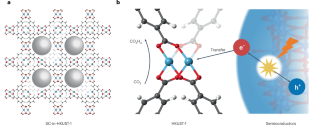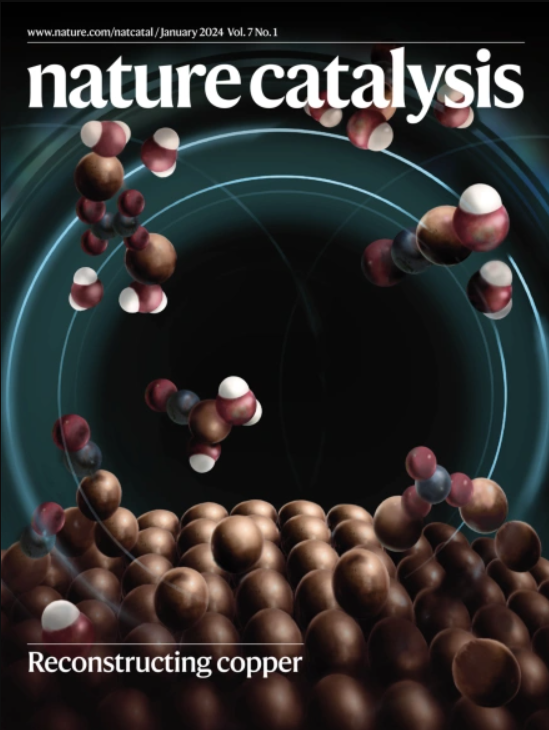孔隙中的半导体
IF 44.6
1区 化学
Q1 CHEMISTRY, PHYSICAL
引用次数: 0
摘要
利用阳光将二氧化碳(CO2)还原为增值产品是一项有吸引力的技术,特别是在生产多碳产品的情况下。现在,通过用半导体纳米颗粒填充铜基金属有机骨架的孔隙,证明了二氧化碳到乙烯的有效光催化转化。本文章由计算机程序翻译,如有差异,请以英文原文为准。


Semiconductors in pores
The reduction of carbon dioxide (CO2) to value-added products using sunlight is an attractive technology, especially if multi-carbon products are yielded. Now, the efficient photocatalytic conversion of CO2 to ethylene is demonstrated by filling the pores of a copper-based metal–organic framework with semiconductor nanoparticles.
求助全文
通过发布文献求助,成功后即可免费获取论文全文。
去求助
来源期刊

Nature Catalysis
Chemical Engineering-Bioengineering
CiteScore
52.10
自引率
1.10%
发文量
140
期刊介绍:
Nature Catalysis serves as a platform for researchers across chemistry and related fields, focusing on homogeneous catalysis, heterogeneous catalysis, and biocatalysts, encompassing both fundamental and applied studies. With a particular emphasis on advancing sustainable industries and processes, the journal provides comprehensive coverage of catalysis research, appealing to scientists, engineers, and researchers in academia and industry.
Maintaining the high standards of the Nature brand, Nature Catalysis boasts a dedicated team of professional editors, rigorous peer-review processes, and swift publication times, ensuring editorial independence and quality. The journal publishes work spanning heterogeneous catalysis, homogeneous catalysis, and biocatalysis, covering areas such as catalytic synthesis, mechanisms, characterization, computational studies, nanoparticle catalysis, electrocatalysis, photocatalysis, environmental catalysis, asymmetric catalysis, and various forms of organocatalysis.
 求助内容:
求助内容: 应助结果提醒方式:
应助结果提醒方式:


